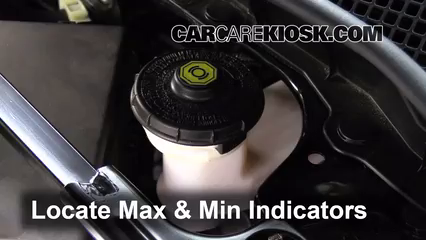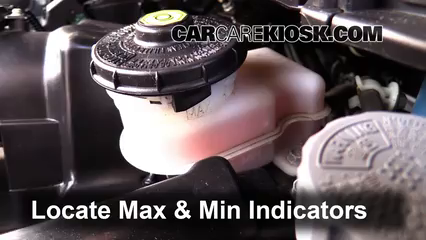

Imagine leaving a bottle of milk open for a few weeks. If you find that your brake fluid is constantly running low, you need to fix the problem ASAP.Īs leaking brake fluid can be life threatening, we recommend taking your vehicle to your local Honda Dealership or an authorised mechanic as soon as possible to get the leak fixed. If you’re brake fluid is lower than it should be, the most common cause would be a leak. To reiterate, no or low brake fluid is bad. So like we said, brake fluid is pretty important. Without brake fluid it would be impossible to stop the vehicle. It allows you to stop the car with only a slight bit of pressure. That brake fluid gets pushed into cylinders next to the wheels and those cylinders apply pressure to the brake pads, causing the vehicle to come to a stop.īasically, brake fluid applies pressure for you on all four wheels via the brake pedal. When you push down on the brake pedal, a lever that's connected under the car pushes a piston into the master cylinder which is filled with brake fluid. So to understand how brake fluid works, we first need to understand how brakes work. When your brakes don’t work, you’re in trouble. To put it simply, without brake fluid your brakes don’t work.

#HONDA CIVIC BRAKE FLUID CHANGE HOW TO#
This causes fresh brake fluid to be pulled in through the reservoir.Īs you can see, the Brake Hold method doesn’t require a second person! The brake hold system keeps the brakes engaged while you get out of the car and tighten the caliper bleed nipple.How do you know when your car needs brake fluid? Find out how to tell when you’re due for a change below. Depress the brake completely and press the Brake Hold button to disable brake hold and release the brake.This pushes fluid out of the system, through the hose, and into the drain pan. Depress the brake completely and press the Brake Hold button to enable brake hold.Fasten the driver-side seatbelt (without you behind it!).Loosen the brake caliper bleed nipple with a 10mm wrench.Repeat steps 3 – 8 for each brake caliper.In my experience, this takes 3-4 repetitions per brake caliper. Repeat steps 3 – 7 until the fluid coming out of the tube is clean, fresh fluid.Person two releases the brake causing fresh brake fluid to be pulled in through the reservoir.Person two depresses the brake completely and keeps it held down.Person one person loosens the brake caliper bleed nipple with a 10mm wrench.Remove the small rubber cap on the brake caliper bleed nipple, and attach a tight fitting tube to the nipple.3ft length of 3/16″ vinyl (or rubber) tubing.You can put it in your Roth IRA every few years and thank me when you’re a millionaire.īleeding brakes (performing a brake flush) is usually a two-person job. Since my “FIRE” or “Rich” journey, or whatever you wanna call it is all about saving and investing, I’m going to teach you how to save that money. After a few calls around town to other shops and mechanics, I learned that they charge about $80 for the job. My local Honda dealerships charge anywhere between $120 and $150 to perform a brake flush. Thanks for reading, and I wish you all the best! Detailed instructions are below the video. Here’s a video from my YouTube channel with all the steps. You enable the feature by fastening your seat belt, starting the engine, depressing the brake, and pressing the brake hold button located near the center console gear shifter. It’s meant to be used while the vehicle is temporarily stopped, like at traffic lights, in heavy traffic, or in a drive-thru. It’s available on continuously variable transmission (CVT) models, and keeps the brake applied after releasing the brake pedal until the accelerator pedal is pressed. It occurred to me recently that this model of Honda has a neat feature called Brake Hold. In this post I’ll skip the lesson on changing the engine oil and instead focus on the brake fluid. I’ve been following the routine maintenance schedule religiously since the day I bought it! My 2016 Honda Civic EX is the first new car I’ve ever purchased. I’ve owned several cars and have never once changed the brake fluid, but this one is different. If you’re anything like me, you were surprised that you would need to replace the brake fluid at such short intervals, however, Honda recommends it at least every three years. 481 of the Honda Owners Manual, this indicates that it’s time for you to replace the engine oil and brake fluid.
#HONDA CIVIC BRAKE FLUID CHANGE CODE#
The maintenance minder on your 2016 Honda Civic just lit up with the code A7. View our FTC disclosure for more information. We may earn commissions from the companies mentioned in this post.


 0 kommentar(er)
0 kommentar(er)
